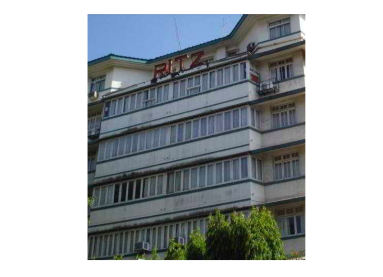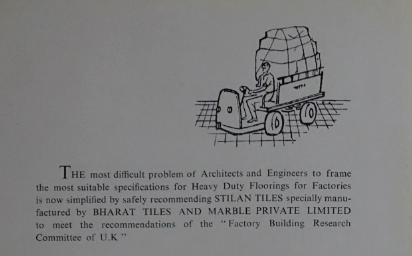100 Years
100 Stories


The airport at Santacruz, Bombay, 1948. Source: @MumbaiHeritage
On 27th November 1877 the people of Bombay looked skywards, not to see the monsoon clouds or a raucous bunch of crows but something else entirely. Joseph Lynn flew on a hot air balloon from the Lal Bagh Gardens and descended near a stone quarry in Dadar.
Fast forward to 15th October 1932. Bombay’s aviation journey had started with J.R.D Tata first landing a Puss Moth on the Juhu airstrip, carrying mail from Karachi. The aerodrome in Juhu was equipped with a small terminal building and a control tower to handle the smaller aircraft that used its services at the time. Night landings of planes were rare and had to be occasionally guided by kerosene goosenecks, the airstrip being ill equipped for the same.
Although by 1951 there were 738 registered aircrafts in India, domestic air travel was still used only by the uber rich – the social elite, business executives and officers from the top-most echelons of the government. Except for long haul routes like Bombay- Calcutta, Calcutta- Delhi and Mumbai- Delhi, air travel had not yet penetrated into the vast network catered to by the railways. After gaining independence in 1947 there was an increase in the number of aerodromes managed by the Civil Aviation Department. By March 1950 there were 72 aerodromes, including those in smaller cities such as Allahabad, Shimla, Ambala and Poona. The ones in Bombay, Calcutta and Delhi were international airports and were so organised as to receive international air services.
The airport in Bombay - in Santacruz, beyond the northern city limits - was initially built as a Royal Air Force (RAF) structure in the 1930s and was heavily used in the Second World War. The rationale of building the airport was to cope with the heavy traffic of fighters, bombers and other aircraft, that required a heavy, strong runway. The new airport at Santacruz was built over an area of 1,500 acres; it had 3 intersecting runways, which was typical of a Class A airfield. After the end of the Second World War, the airport and its operations were handed over to the Director General of Civil Aviation.
The two old RAF hangars at the Santacruz airport started to be used by private operators and were converted into terminals for passenger traffic. One hangar was used as a domestic terminal and the other for international traffic. The terminals had counters for customs and immigration checks on either side and a lounge in the centre. Only Air India International had its own terminal for handling passenger traffic in a tiny red brick tiled building, tucked in a corner.
With time, Bombay became an important hub with several modern international airlines flying in and out. Larger terminals with facilities for passenger handling and comfortable lounges were needed. A new terminal was therefore planned and its construction in Santacruz began in 1948. In the city’s newest mark of modernity, Bharat was selected to carry out flooring in the terminal building. The company, which by then had made a name for itself as a design and quality conscious flooring expert, had a wide array of offerings such as tiles, marble and granite. Bharat’s ornately patterned tiles and minimalistic terrazzo had graced some of Bombay’s poshest homes since 1922, and the strength and robustness of their products had already been tested in public places with heavy footfalls such as at Bombay Central and Ballard Pier railway stations.
It therefore came as no surprise when Bharat received the work order for the Air Terminal project in 1955. At this new facility, BFT carried out in-situ terrazzo work using different types of Italian and Indian marble chips, deep red imported Verona chips, white chips from Chota Udaipur(CU) and black and brown chips, all on a Light Grey base. The combination of neutral colours and small sized chips gave the terminal building a stylish and airy feel. A decade later in 1964, terrazzo with grey marble, White Verona chips along with Bhavnagar Red and Mewad Brown colours were used in situ in another extension of the building.
When a new International Airport terminal was planned at Sahar village to the north-east of the domestic one in Santacruz, Bharat once again was selected as the preferred vendor. The project was estimated to cost Rs. 11 crores, and was proposed to be completed by 1981.
The new airport commissioned at Sahar was to be built in a modular concept in three phases with each module having a capacity of handling 2.5 million passengers per annum. The building was said to have covered a total area of 1,20,000 square metres and the capacity for parking 15 aircraft in contact and 12 in remote positions. It also had a cargo terminal for handling import and export cargo. Santacruz Airport was relabelled Terminal 1 while the new airport at Sahar was called Terminal 2. The new terminal at Sahar was opened for traffic in 1980. By 1986, Bombay airport was handling 19 million passengers annually.
More and more buildings were added to the airport and an increasing traffic of passengers and baggage trolleys at the airport called for strong, durable tiling. Bharat’s heavy duty Stilan® tiles, was more than up to the task. Incorporating ingredients ‘harder than diamond’, Stilan® was a product launched by Bharat in 1960 and had been used in textile mills, power stations, bus depots all over India. This time too, Stilan® became the tile over which millions of passengers and trolleys passed every year.
And finally, the lounge of Air India at the International terminal had Bharat’s newest offering of heritage tiles in star design in small carpets laid into an Italian marble floor.
The airports were each a part of Bombay’s modernisation and urban expansion over the years and symbolic of Bombay’s increasing global connections. Bharat, was present at each stage of this expansion, indelibly linked to Bombay’s iconic national and global aviation milestones.
You may also like
-
 32Archival Find: BFT Price ListBuff Octagons & Black Dots tile charged at Rs 56 per 100 Sq. ft or the price of 'Sanjab' - Get a glimpse of Bharat's old price list from the bygone era and see how products were originally priced, along with some quiry terms and conditions placed before buyers.Read More
32Archival Find: BFT Price ListBuff Octagons & Black Dots tile charged at Rs 56 per 100 Sq. ft or the price of 'Sanjab' - Get a glimpse of Bharat's old price list from the bygone era and see how products were originally priced, along with some quiry terms and conditions placed before buyers.Read More -
 33My Home: Behram Engineer, Brady's Flats, ColabaOne of the oldest continuing occupants of Brady’s Flats in Colaba, Behram Engineer recalls a lifetime of elegant parties and a continuing love affair with Bharat’s floors. Take a stroll down the memory lane through this elusive Mumbai landmark and marvel at the original Bharat floors from a bygone era.Read More
33My Home: Behram Engineer, Brady's Flats, ColabaOne of the oldest continuing occupants of Brady’s Flats in Colaba, Behram Engineer recalls a lifetime of elegant parties and a continuing love affair with Bharat’s floors. Take a stroll down the memory lane through this elusive Mumbai landmark and marvel at the original Bharat floors from a bygone era.Read More -
 34The Bharat - Shapoorji Pallonji LinkShapoorji Pallonji, and Bharat Tiles went on to build some of Bombay's most iconic structures, leaving their collective mark all over the city. Explore some of the structures constructed by Shapoorji Pallonji and floored by Bharat.Read More
34The Bharat - Shapoorji Pallonji LinkShapoorji Pallonji, and Bharat Tiles went on to build some of Bombay's most iconic structures, leaving their collective mark all over the city. Explore some of the structures constructed by Shapoorji Pallonji and floored by Bharat.Read More




